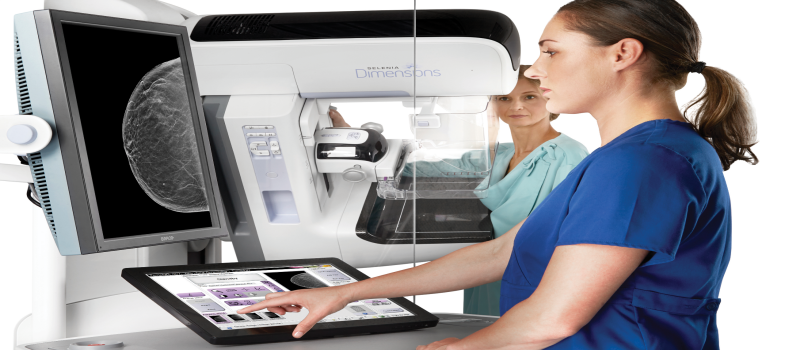Early detection of any cancer increases the probabilities of recovery by successfully treating it. Every woman in her mid-30s should get an annual mammogram for early detection of breast cancer.
A 3D mammogram (breast tomosynthesis) is the latest imaging test that combines multiple breast X-rays (like traditional mammography) for creating a three-dimensional image of the breast tissues for detecting any signs or symptoms of breast cancer or any other abnormalities. It is used to examine the reason for various breast problems, such as lumps, nipple discharge, and pain. 3D mammography produces highly detailed images of breast tissue by 3D capture of multiple slices of the breast from different angles.
The 3D mammogram takes approximately 300 images, giving an exact idea of the issue whereas two-dimensional mammogram takes about four images at a time giving some false alarms. It lets the radiologist view the breast tissue in full detail, equipping them to give a certain diagnosis, if they have cancer or not by visiting the nearest diagnostic center. This is specifically valuable for women with dense breast tissue, as they are at higher cancer risk.
Why is 3D Mammography Performed?
We know that traditional mammography took only two images of each breast of a side-to-side view and a top-to-bottom view. 3D mammography takes various X-ray images of the breasts from multiple angles to create a digital version of internal breast tissue. The multiple images make radiologists assess the breast in 1mm slices in place of only two views.
Radiologists correctly interpret results from 3D mammography in dense breast tissue, resulting in fewer false-positive and false-negative readings.
What to Expect from 3D Mammography
The preparation of a 3D mammography is exactly the same for traditional mammography. Women should schedule mammography at a date one week after their menstrual period starts because they are least tender at that time.
3D mammography involves a bare torso, so it is suggested to wear comfortable, easy-to-remove clothes. Avoid applying Deodorant, perfume, lotion, and other products on underarm or torso before 3D mammography, since these products interfere with the imaging process. Women should inform their radiologist or physician if they are pregnant, breastfeeding, have breast implants or suffer from any medical conditions, so they can change the procedure accordingly.
A radiologist interprets the results of 3D mammography by viewing the calcification or masses in the breast tissue and using a standardized classification system called Breast Imaging Reporting and Data System (BI-RADS).






